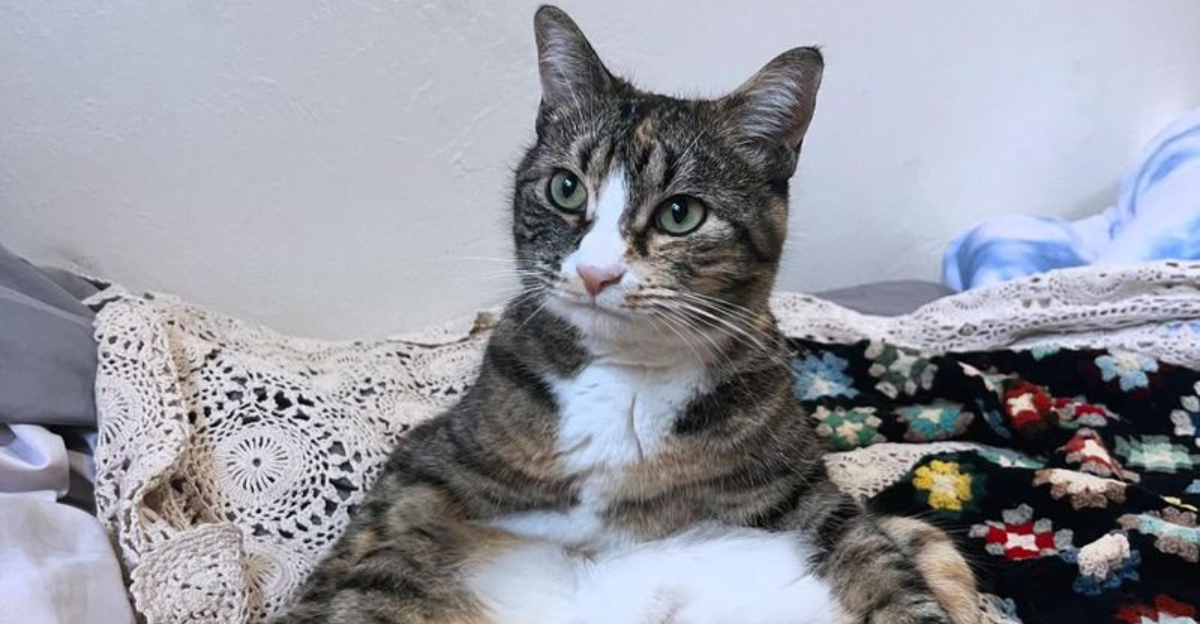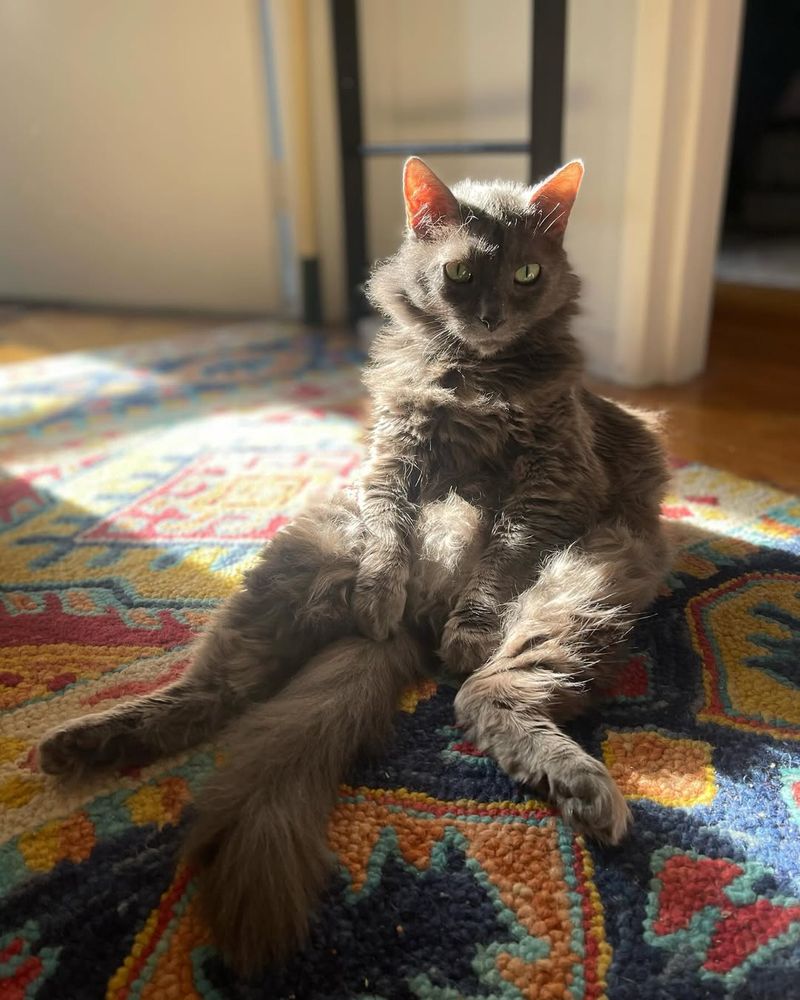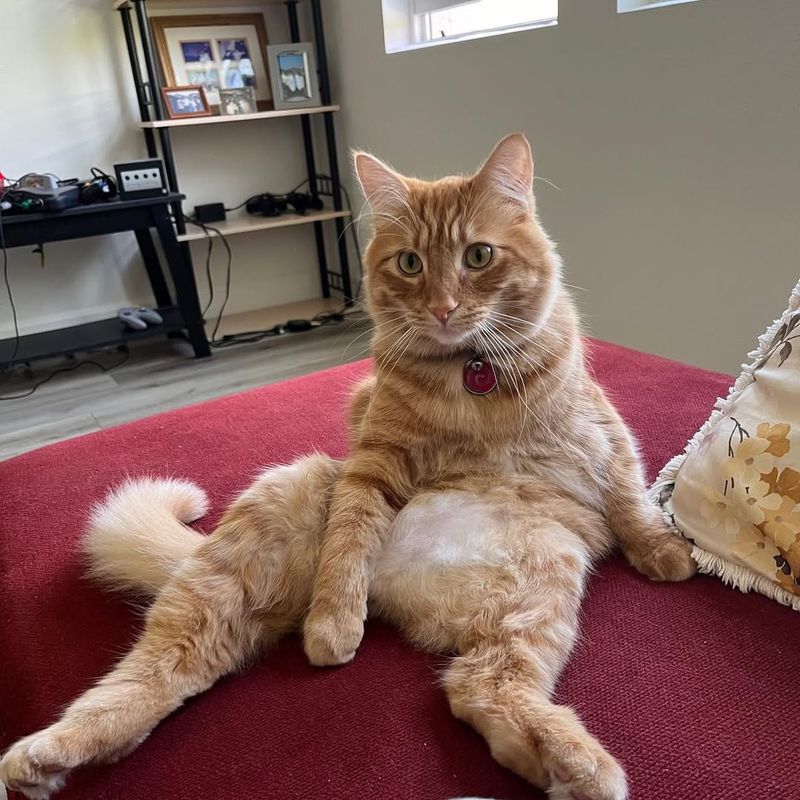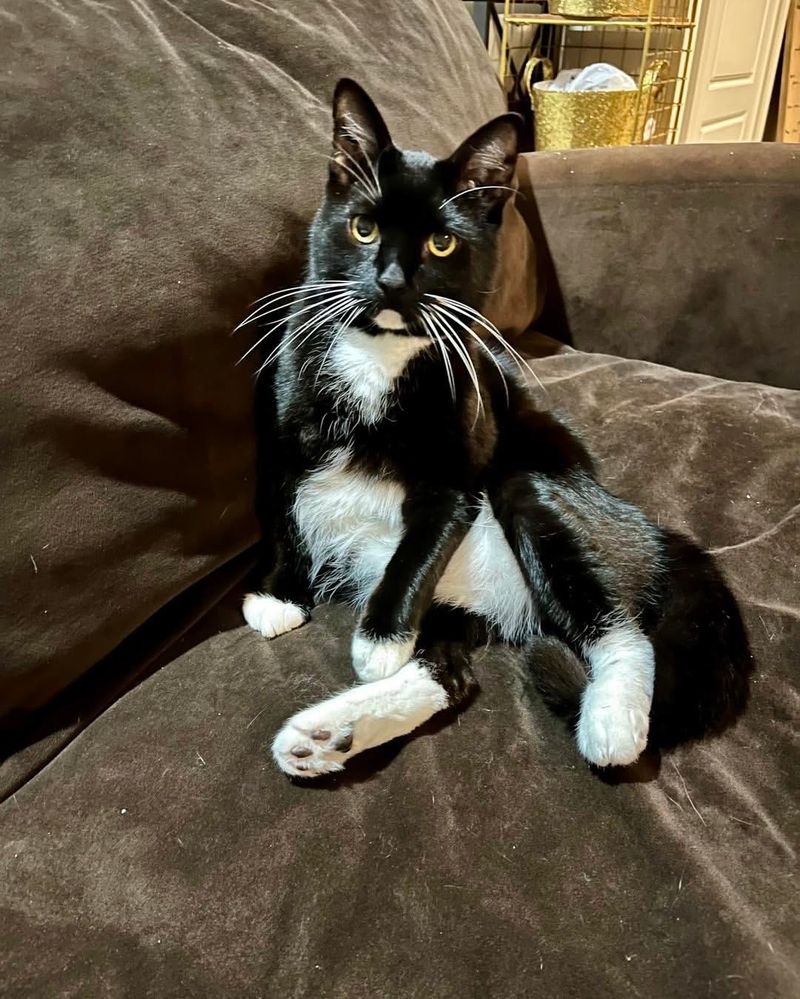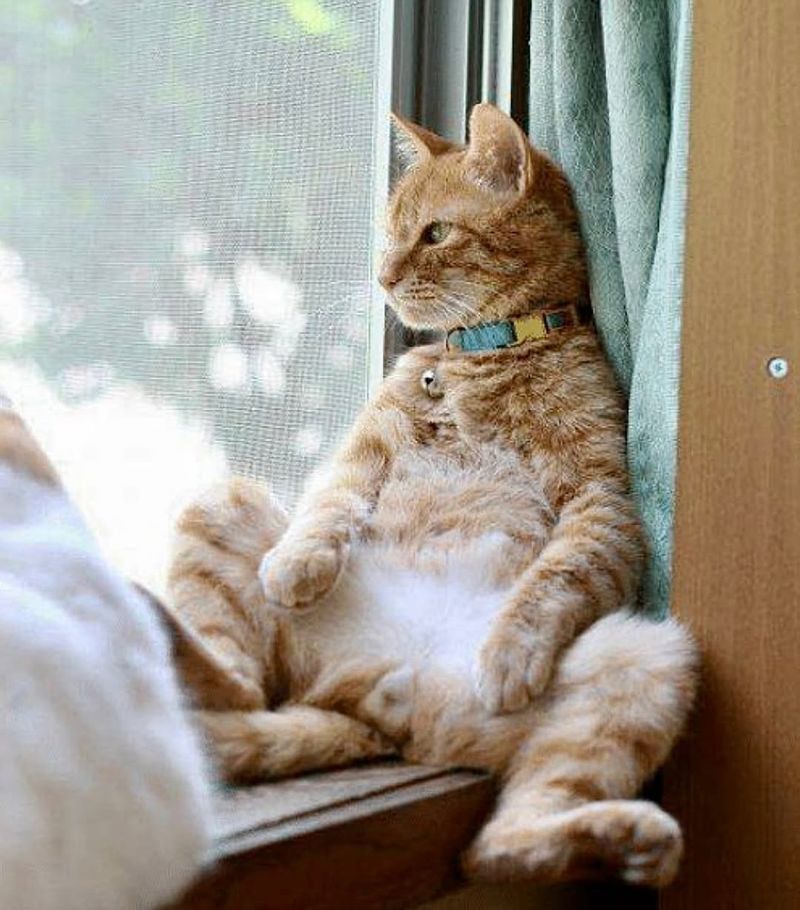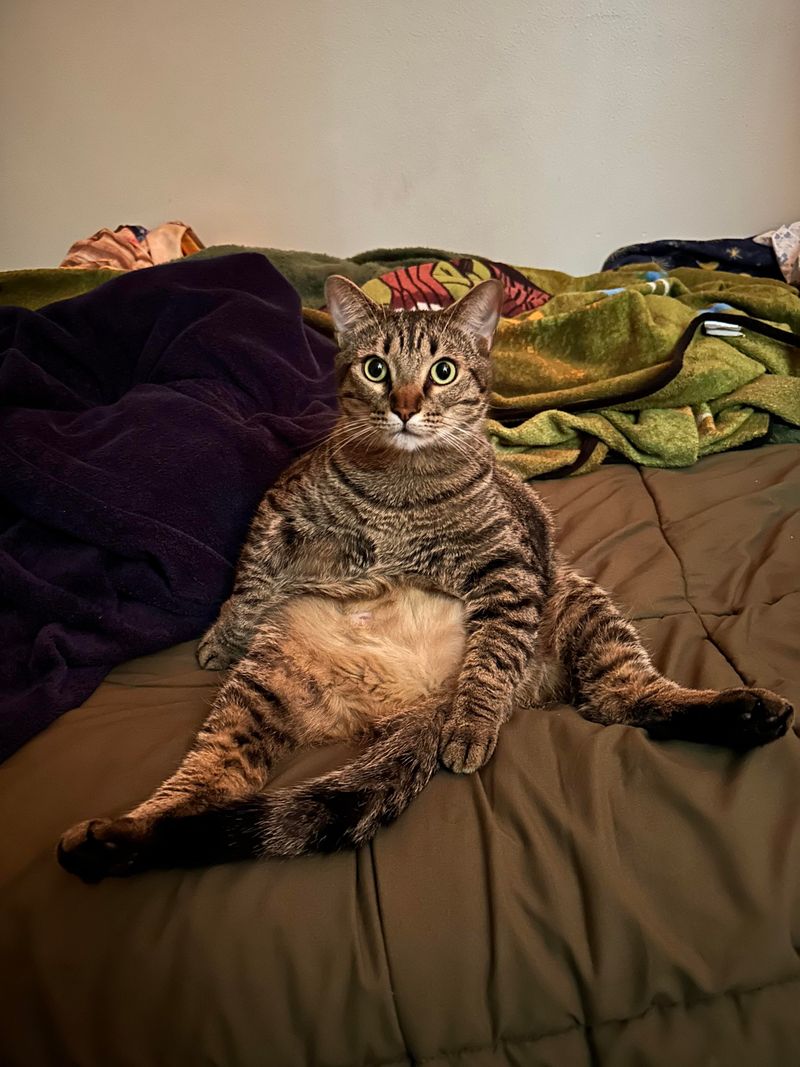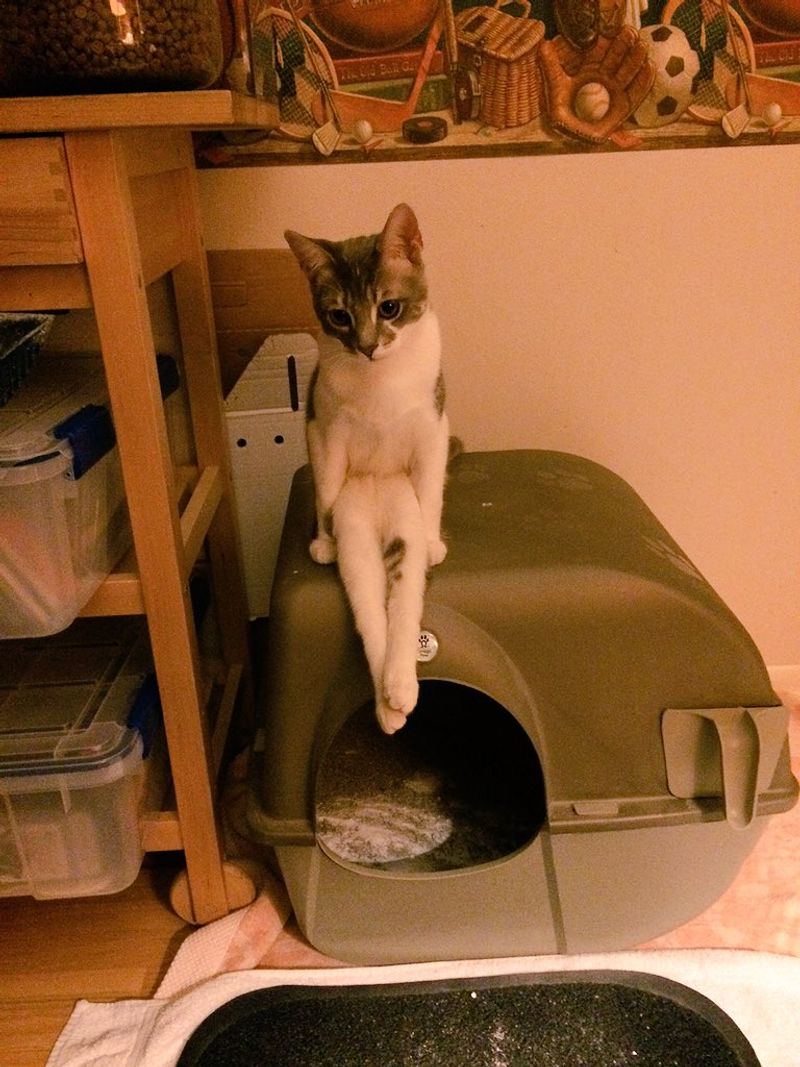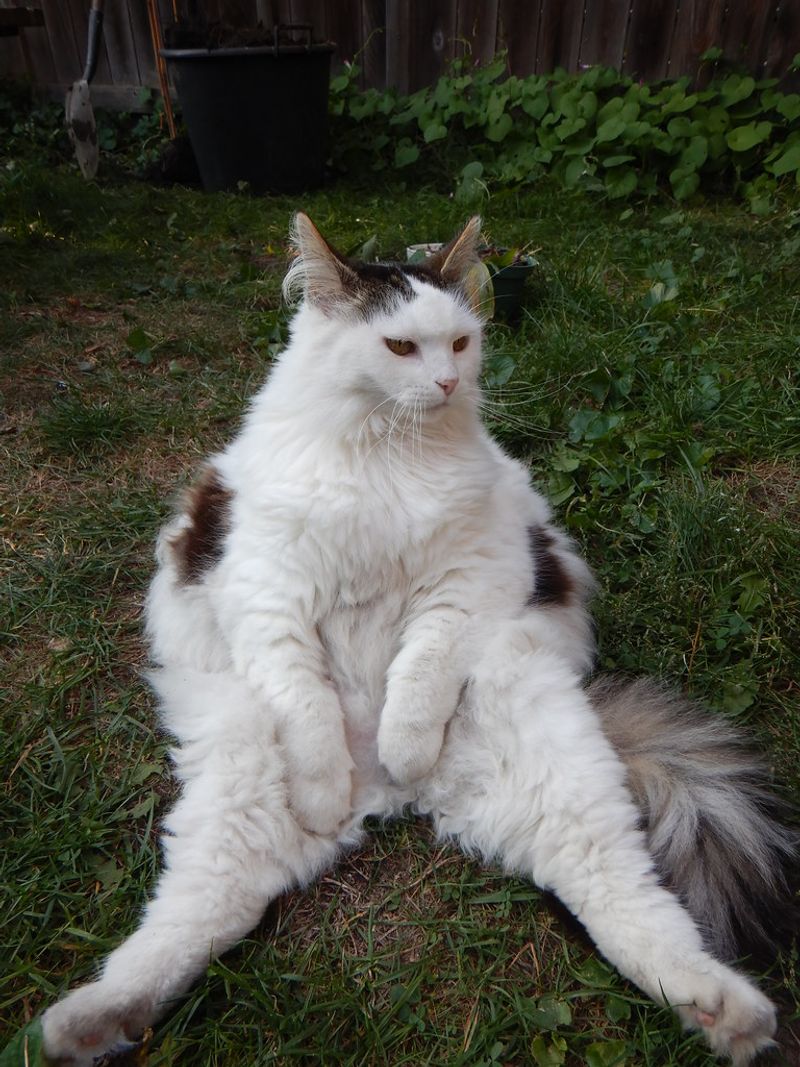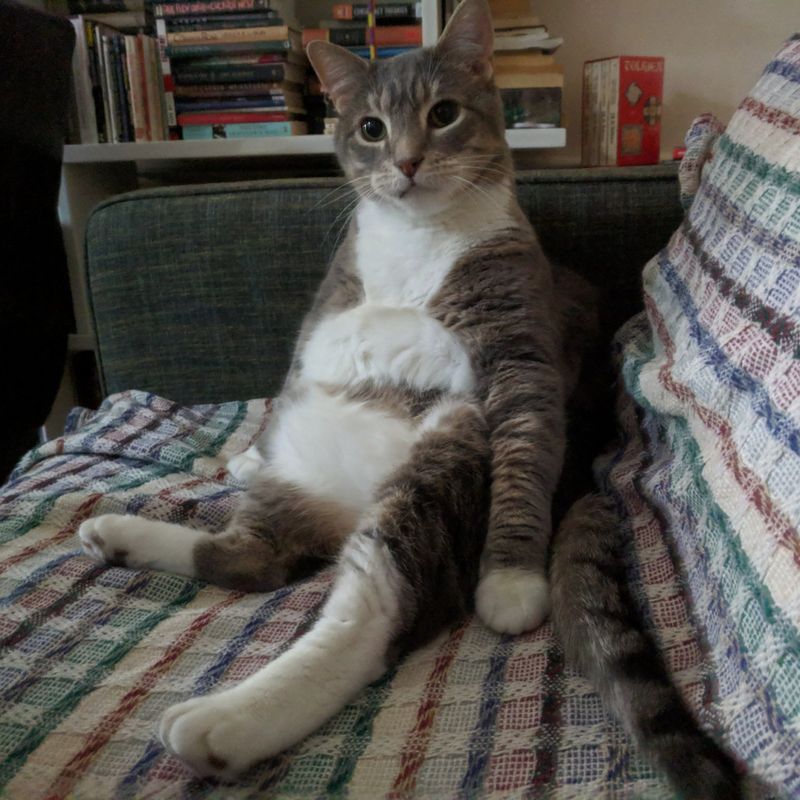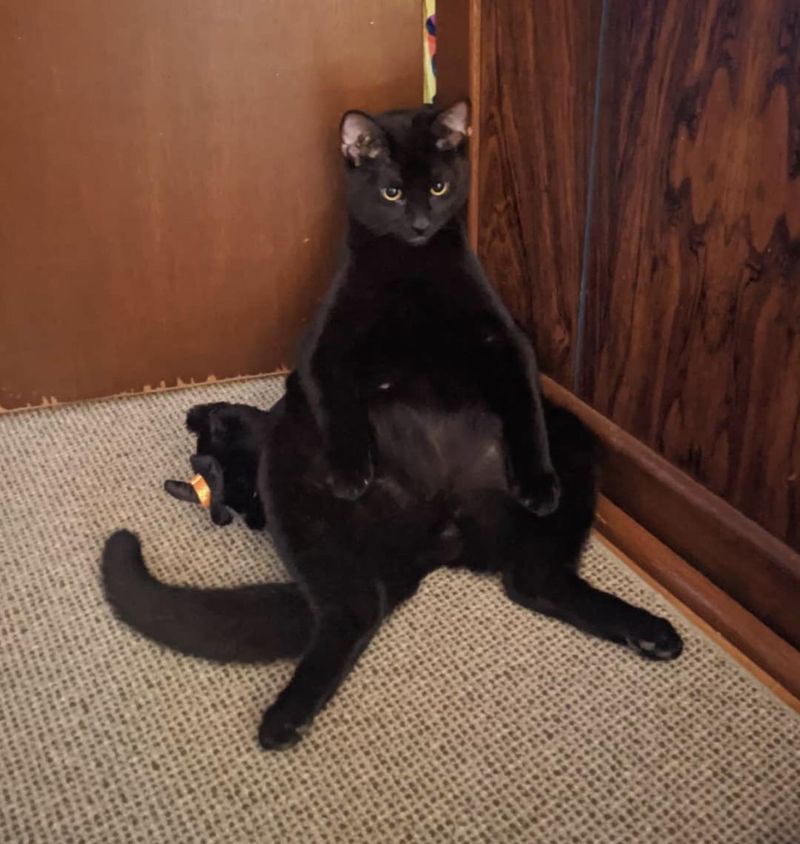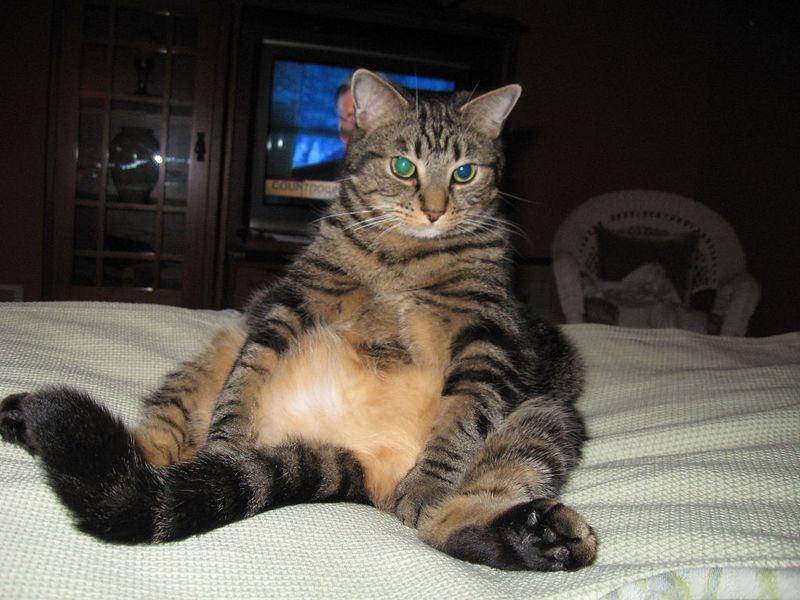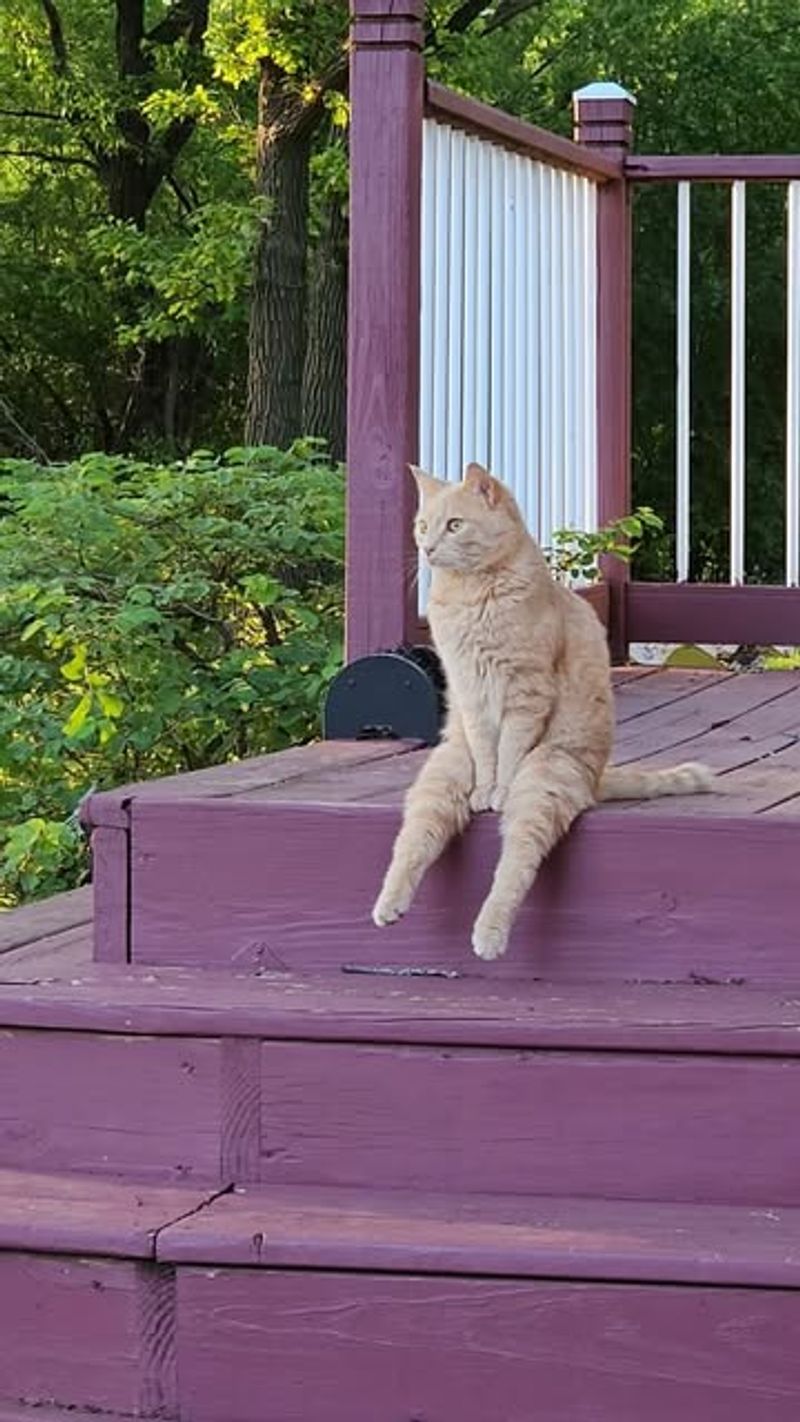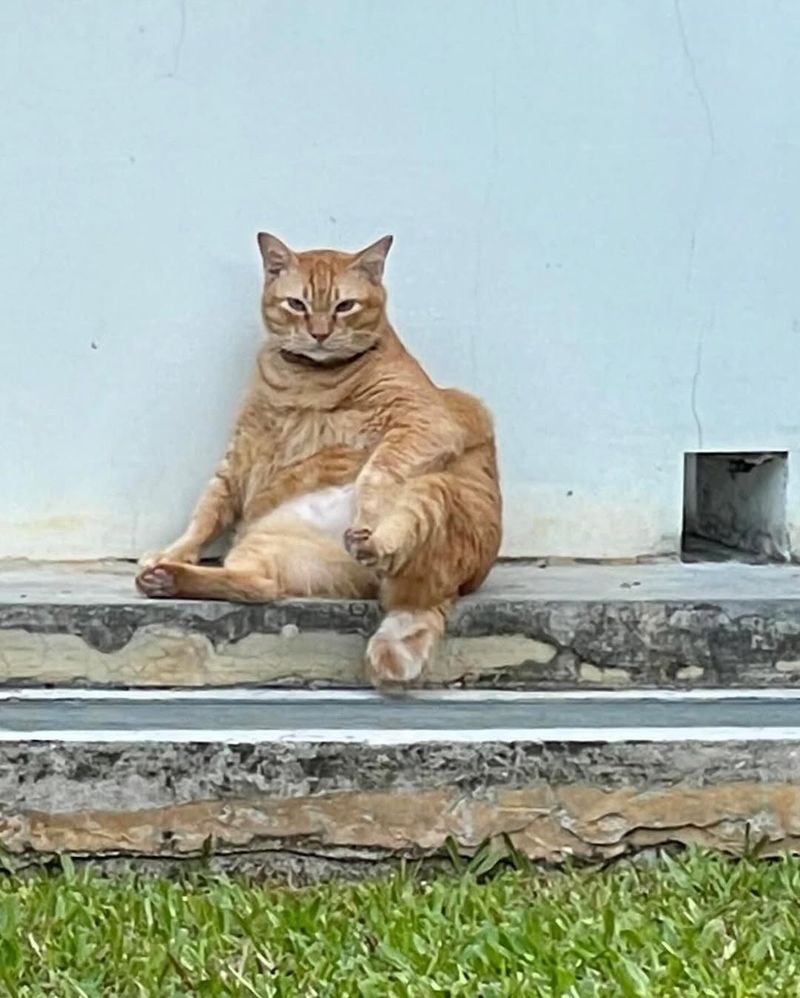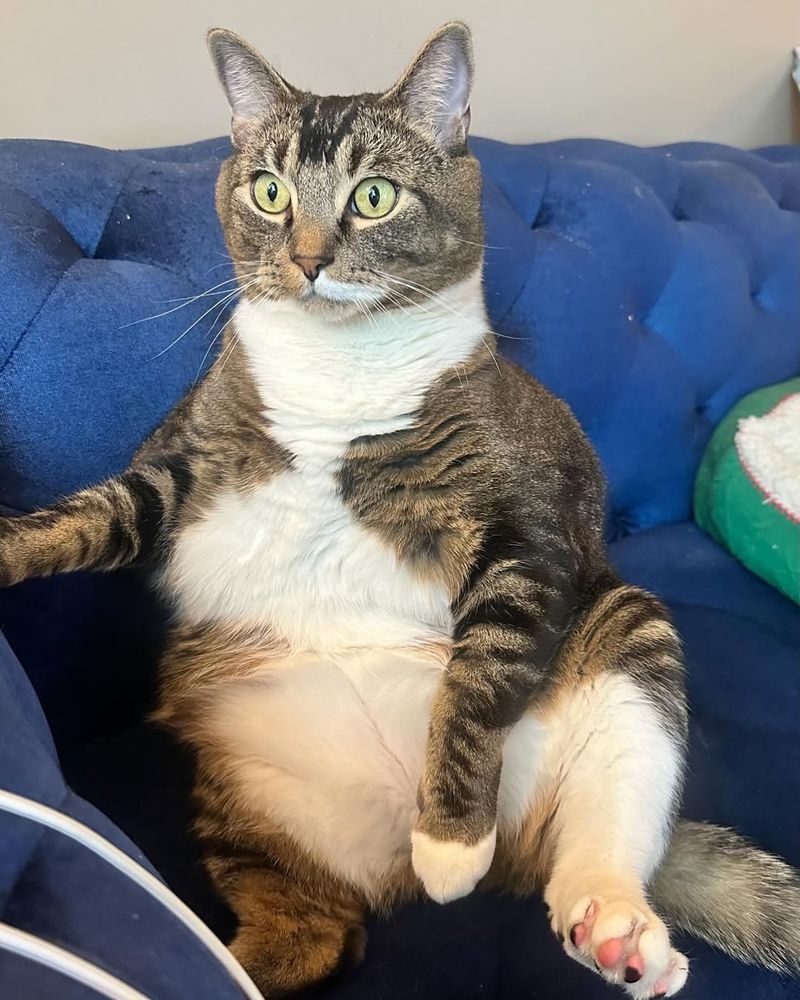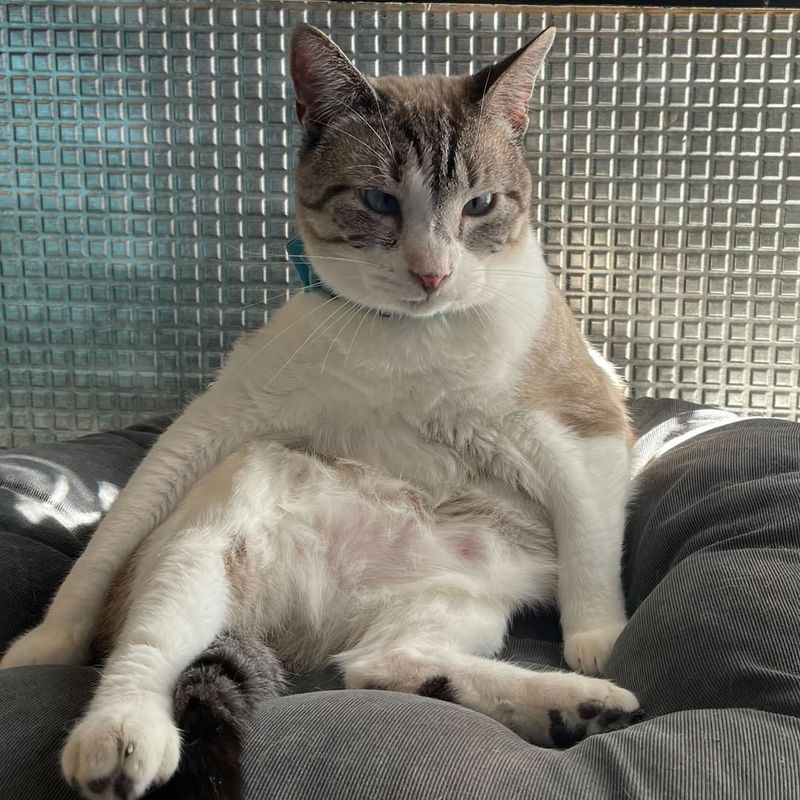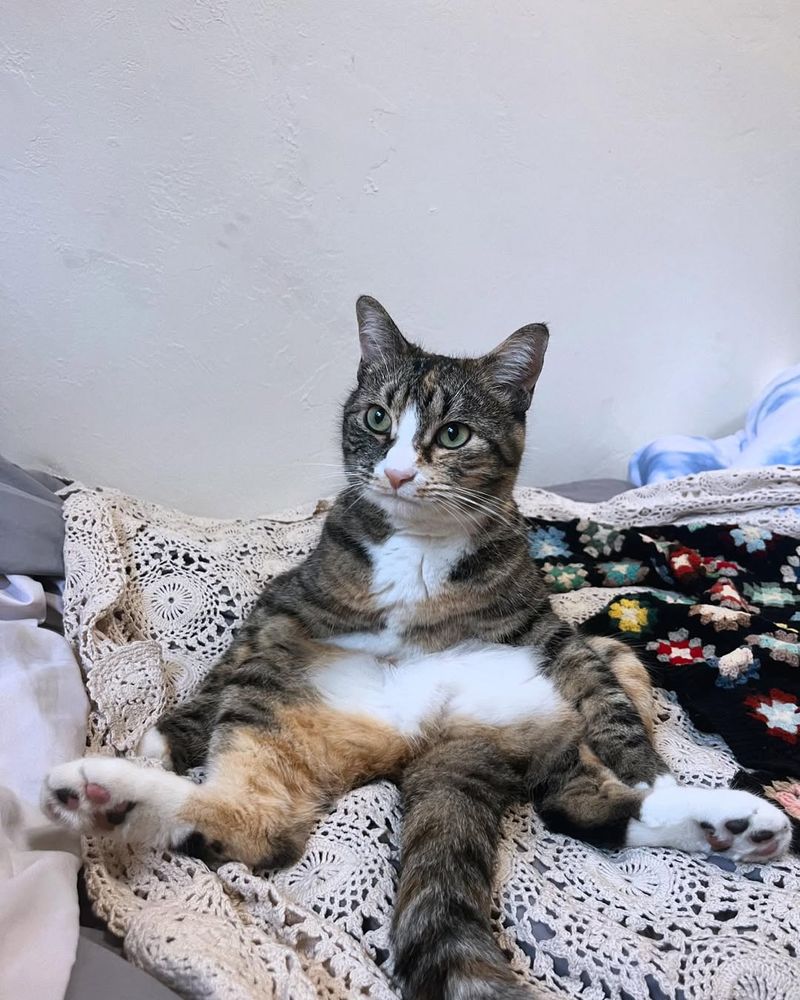📖 Table of Content:
- 1. Mimicking Humans
- 2. Medical Issues
- 3. Temperature Regulation
- 4. Comfort and Relaxation
- 5. Curiosity and Observation
- 6. Attention Seeking
- 7. Stretching and Flexibility
- 8. Copying Other Animals
- 9. Playful Antics
- 10. Feeling Confident
- 11. Habitual Behavior
- 12. Seeking Security
- 13. Cooling Down
- 14. Balancing Act
- 15. Cultural Influence
Cats are known for their amusing and sometimes puzzling behaviors, and sitting like humans is certainly one of the most curious. This unique sitting posture, where their hind legs are stretched out and their back is straight, often catches the eye. While it may look odd, it serves a variety of purposes for your feline friend.
The way a cat sits can be influenced by its comfort, health, or even its personality. Some cats find this position more relaxing or supportive, while others may do it as a display of confidence or curiosity. Understanding these quirks can offer a deeper insight into your cat’s behavior and preferences.
Whether your cat is lounging on the couch or sitting upright on the floor, this posture often reveals a lot about their mood and physical well-being. From relaxation to playfulness, there are numerous reasons behind this quirky behavior. Let’s take a closer look at 15 possible explanations for why a cat might sit like a human.
1. Mimicking Humans
Cats are observant creatures, and they often learn by watching us. Mimicking human behavior is not uncommon, especially if they see us as part of their social group. By sitting like a human, they might be trying to strengthen their bond with you.
This imitation could also be a way to communicate or signal that they want attention. It’s their way of joining in and sharing in the familial atmosphere. Imitation is a form of flattery, and your cat might just be showing how much they admire you. Keep an eye out for other behaviors they might copy!
2. Medical Issues
If your cat suddenly starts sitting like a human, it could be due to medical issues such as arthritis or joint discomfort. This position might relieve pressure on aching joints or muscles. Older cats, in particular, might find this pose helps them manage pain and maintain balance. If the behavior appears suddenly or is accompanied by signs of discomfort, consult a veterinarian.
While it’s cute, it’s essential to ensure your cat is healthy and comfortable. Early detection of medical issues can lead to better outcomes and a happier cat.
3. Temperature Regulation
Sitting like a human might be a cat’s way of maximizing warmth absorption. By spreading their bodies, they can soak up more heat from the sun or a heater. This posture helps them stay comfortable, which is why they often choose it when relaxing in sunny or warm areas.
Understanding your cat’s thermal needs can help you provide a cozy environment, making them feel more at home and relaxed in their surroundings.
4. Comfort and Relaxation
When it comes to relaxation, cats know what works best, and sitting like a human is one of their go-to positions. With their back supported and hind legs stretched out, they can comfortably rest while staying alert. It also keeps their front paws free to groom or play as they wish.
In this position, they can easily stretch or adjust without having to stand up. It’s a lazy cat’s dream and a sign they feel safe and secure in their environment. If your cat sits like this, it might be their way of saying they’re content.
5. Curiosity and Observation
Being naturally curious, cats love having a good vantage point, and sitting like a human offers just that. This posture gives them the ability to observe their environment with ease.
From this position, they can keep an eye on potential prey, other pets, or any changes in the environment. It’s a strategic choice that helps them process information and decide on their next move. Encouraging their curiosity with interactive toys or bird feeders outside the window can enhance their entertainment and satisfaction, aligning with their instincts.
6. Attention Seeking
Sometimes, sitting like a human is simply a ploy for attention. Cats are smart and quickly learn what amuses and interests their owners. If your cat knows that sitting this way gets a reaction from you, they might do it more often. This behavior is a way to engage you and become the center of your attention.
Interacting with them positively when they do this can strengthen your bond and encourage more playful behavior. It’s their clever way of staying in the spotlight and ensuring they remain your focus.
7. Stretching and Flexibility
Cats are incredibly agile, and sitting like a human might be a way to stretch their muscles and maintain flexibility. This position can help them limber up and keep their joints in good condition.
It’s an exercise in balance and coordination, allowing them to shift positions easily and stretch different muscle groups. This pose might be part of a stretching routine, especially after a nap. Encouraging regular play and providing cat trees or climbing structures can help maintain their physical health and keep them agile and active.
8. Copying Other Animals
In multi-pet households, cats may imitate the behaviors of their animal companions. For instance, if your cat shares a home with a dog, it may adopt the dog’s sitting posture. This imitation is part of their social learning, helping them better communicate and interact with other species.
It’s an adaptive behavior that shows their intelligence and ability to learn from their environment. Observing these interactions can provide insights into the social dynamics of your pets.
9. Playful Antics
At times, sitting like a human is just a playful behavior that some cats indulge in. With their fun and curious personalities, cats often do unexpected things that leave us laughing.
This pose might be a way to engage in play or simply amuse themselves. It’s a reminder not to take life too seriously and enjoy the lighter moments. Encouraging these playful behaviors with toys and interactive playtime can enhance their happiness and well-being, creating a joyful and lively home environment for both of you.
10. Feeling Confident
A cat sitting like a human might be displaying confidence and asserting their presence. This posture can be a way to show dominance or simply express their self-assured nature. Cats often choose high places or prominent positions to sit, enhancing their sense of security and control over their territory.
Recognizing this behavior can help you understand your cat’s personality and provide environments that support their need for exploration and confidence. It’s all about letting them express themselves and feel like the rulers of their domain.
11. Habitual Behavior
Over time, sitting like a human can turn into a habit for some cats. If they find a certain posture comforting or advantageous, it becomes part of their routine. These behaviors are often shaped by past experiences that brought warmth, comfort, or attention.
Recognizing these habits can help you cater to their preferences, ensuring they feel comfortable and happy in their home environment. It’s a testament to their ability to find what works best for them.
12. Seeking Security
To feel more secure in new environments, cats might sit like a human. This position allows them to feel stable and less vulnerable. It provides them with a good vantage point to monitor their surroundings, and offering safe spaces can help them feel more relaxed and secure.
Understanding their need for security and addressing it can lead to a more relaxed and confident cat, enhancing their overall well-being and happiness at home.
13. Cooling Down
In hot weather, sitting like a human can help cats cool down. By spreading out their body, they maximize exposure to cooler surfaces, regulating their body temperature.
This position can be particularly beneficial on tile or wooden floors that provide a refreshing respite from the heat. Ensuring they have access to cool areas and fresh water can help them manage their temperature effectively. It’s a practical strategy for staying comfortable and avoiding overheating during warmer months.
14. Balancing Act
Cats may sit like humans to test and improve their balance. This position requires them to engage core muscles and maintain stability, sharpening their physical skills.
It’s a fun way for them to challenge themselves and explore their physical capabilities. Providing platforms and spaces for climbing and balancing can encourage this playful exploration. Understanding these activities helps you appreciate their natural instincts and support an active lifestyle that aligns with their physical and mental needs.
15. Cultural Influence
In today’s world, cats are influenced by culture and media, often depicted in amusing human-like poses online. This might encourage owners to reinforce such behavior, whether consciously or not.
Cats are responsive to their environment and may pick up on cues from their human companions or the media they consume. This quirky behavior becomes a shared joke or experience, strengthening the bond between the cat and the owner. Embracing these cultural quirks adds a layer of fun and connection to your relationship with your pet.
